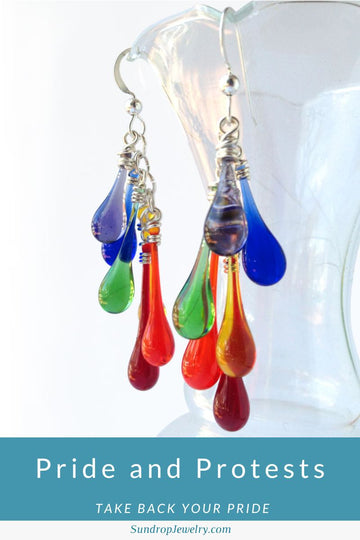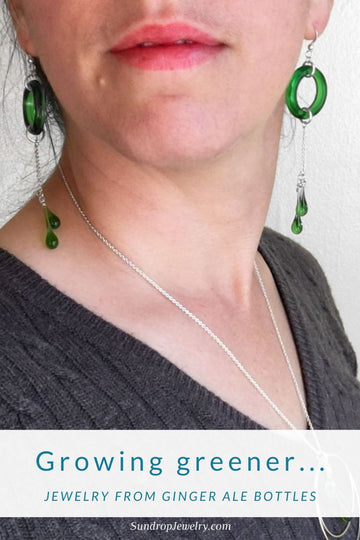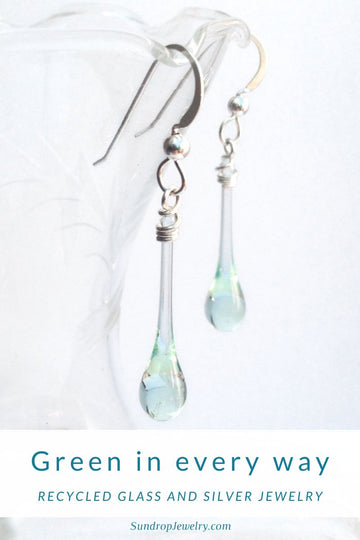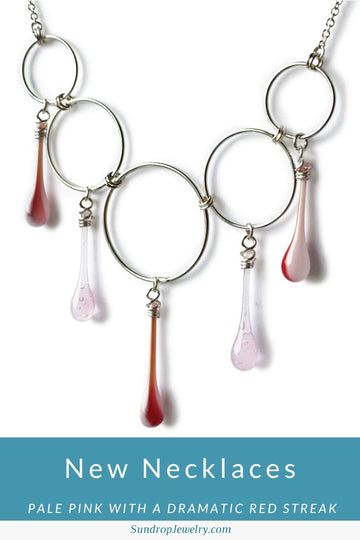Back to analyzing the environmental impact of Sundrop Jewelry...



Environmental impact of our old cards vs. our current jewelry cards
for 1000 pairs of earrings.
We had our printing done by a local printer in Northfield, MN: Engage Print. They used soy-based inks, which produce a lot fewer VOCs, make it easier to recycle the paper they are printed on, and are renewable (mostly - there are things other than soybean oil in the ink). However, I presume that the amount of energy required to print the ink on paper remains mostly unchanged whether petroleum or soy ink is used. Although we cut our card in half, we now print both front and back, resulting in roughly the same amount of ink and printing process per card.
Our old jewelry cards
Erin's orignal post about paper calculated our impact using the Environmental Defense's Paper Calculator. Our original cards were nothing special in terms of environmental friendliness, so we used the default national averages for paper (pulp composition, bleaching process, etc.). Doing the same calculation today gave me slightly lower numbers than Erin reported - the national average is improving!

Our new, improved, better-than-ever jewelry cards
When the time came to order new cards, we did some serious research and ordered something well-nigh perfect: a card half the size of the old card, printed by a local printer using soy-based ink on 100% post-consumer recycled content cardstock, which was whitened without chlorine. As you can see below, our impact is only a quarter to a third of what it was before in every category - except wood. No trees were harmed in the making of our jewelry cards.
for 1000 pairs of earrings.
Printing
This graph does not include the impact of printing, only the paper it is printed on. According to the Energy Information Administration, the printing industry uses about 4% as much energy as the paper industry on a national level. In addition to energy use, there are VOCs (Volatile Organic Compounds) and other toxins in standard petroleum-based ink.We had our printing done by a local printer in Northfield, MN: Engage Print. They used soy-based inks, which produce a lot fewer VOCs, make it easier to recycle the paper they are printed on, and are renewable (mostly - there are things other than soybean oil in the ink). However, I presume that the amount of energy required to print the ink on paper remains mostly unchanged whether petroleum or soy ink is used. Although we cut our card in half, we now print both front and back, resulting in roughly the same amount of ink and printing process per card.
Related Articles





